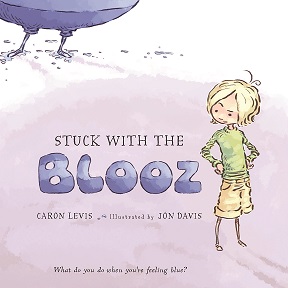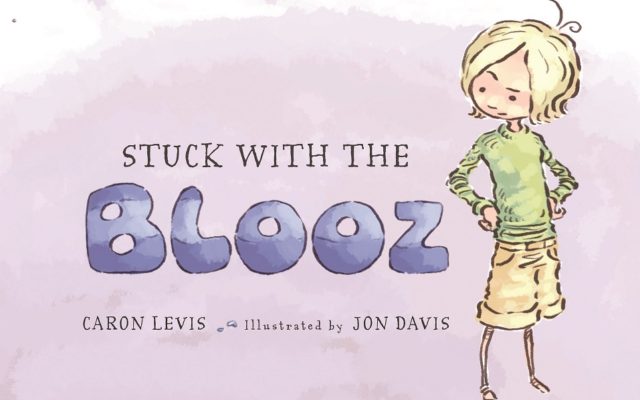Originally published in Teachers & Writers Magazine (Vol. 45, No. 2, 2014)
The classroom phone rang as Mrs. Pearson’s first-graders tumbled in, pulling off coats and scarves, shoving backpacks into the overstuffed closet along the wall. As Mrs. Pearson excused herself to answer the call, a small girl swimming in a large, red sweatshirt offered me a plastic flower that she’d made, “because you’re the author.” I watched her walk to her desk and join the other kids who were gripping crayons and coloring in their morning letters, yawning, fidgeting, daydreaming, chatting as students do. Mrs. Pearson hung up the phone with shake of her head. “That was Kayla’s mom, and so along with everything else I told you before, you should also know that Kayla’s favorite chicken died this morning.” She sighed. “She really loved that chicken.”

Mrs. Pearson was doing everything she could to provide salve and a sense of safety to her classroom. Her first-grade students in Newtown, Connecticut, had experienced more death, loss, and sadness than any child should ever face because of the recent shootings at the nearby Sandy Hook Elementary School. Kayla, like many of the children, had been suffering from severe mood swings and exhibiting regressive, clinging, and at times despondent behaviors since December. She was one of eleven of the eighteen children in the class who, as Mrs. Pearson told me, “knew someone who had perished in the tragedy.” Mrs. Pearson had contacted me last winter, thinking that the author workshop for my book, Stuck with the Blooz, might be helpful to her students’ healing process. Since the book’s release I had been visiting elementary schools to read the story and to explore the emotions it presents through writing, drawing, and acting activities. I was honored to be invited by Mrs. Pearson, but as I passed the Blue Colony Diner with its windows full of letters and signs of solidarity and support, I worried I might be bringing an umbrella to somebody caught in a hurricane. I had written Stuck with the Blooz in the hope of validating experiences and fostering explorations of sadness, but I had certainly not been considering events like the Newtown shootings, or Hurricane Sandy, or the Boston Marathon bombings when drafting it. I’d already visited students in a wide variety of places: in low-income public schools and top-tier private schools; in urban and suburban areas; in special education and gifted and talented programs. In all these places children had seemed to relish the opportunity to explore, as one child put it, “this sad blue way of feeling that everybody feels sometimes,” through reading, writing, and drama. But I had not visited a group with a shared tragedy so devastating and fresh. As Kayla trudged through the door, her head hanging like a snowdrop flower (the flowers that Shakespeare used to symbolize sorrow) I wondered if it was truly wise for me to ask these children to tell me what sadness would look like if it walked through the door.
In my book, sadness is personified and portrayed by the illustrator Jon Davis as a gentle and plump blue blob in an old-fashioned romper. Before my editor took a chance on this book, other publishers had told me it was too risky to publish a book for children about sadness. Kids wouldn’t choose it, parents wouldn’t want to read it, sadness doesn’t sell. I found encouragement, however, in the words of Ellen Handler Spitz. In her book, Inside Picture Books, Spitz considers our very human instinct to protect and shield children from pain, discomfort, and sadness and reminds us:
Just as we adults go to the theater to watch plays and hear operas that bring tears to our eyes, so children should be permitted to have experiences with art objects that are not all sugar and spice. Although children cannot be protected from loss, they can be exposed to it in ways that range from the sensitive to the callous, the inquiring to the hushed, the slow and careful to the swift, sudden, and overwhelming. With a beautifully crafted picture book and a measure of unhurried time, an attentive child and an engaged adult can accomplish important psychic work that may not involve gaiety but that can, in its own way, be considered to include other forms of deep pleasure. That is, if we count the communication of shared and meaningful experience as a form of deep pleasure.
I fell in love with reading as a child exactly because of the bittersweet pleasure Spitz describes, and I still cherish the children’s books which delve into those uncomfortable emotions and subjects that don’t get spoken aloud. So, buoyed by joyful memories of reading Judith Viorst’s Alexander and the Terrible, Horrible, No Good, Very Bad Day; and Maurice Sendak’s We’re All in the Dumps with Jack and Guy, I stuck to my plan, passed out the activity sheets, and asked the kids to answer, through writing and drawing, the same “weird writing questions” I had asked myself when starting the story. I assured them that there were no right or wrong answers; after all, sadness is a feeling. It can’t actually walk through the door, but what if? As the kids grabbed pencils and crayons, I remembered what students from other schools had told me:
Sad’s shape is: a sharp triangle, a squiggle, a tear, a cracked heart, a blue heart, a black flower, a thunderbolt, the rings that happen in a puddle when a raindrop splashes in it, a melted ice cream cone.
Sadness sounds like: snow falling, pouring rain, a whimper, jazz, Adele’s “Rolling in the Deep,” coughing, sighs, hearts beating really slow.
Sadness tastes like: a cupcake that came out bad, mashed potatoes, regret, bitter grapefruit, chili peppers.
Sadness smells like: burnt cookies, burnt wood, salty sea water, a tsunami of tears, an “onyin.”
In response to my request to create a picture of sadness, students at the schools I’d visited had drawn everything from abstract shapes and squiggles to very specific and revealing portraits, such as the kindergartener in Boston who drew a crying Bruins player during the ice hockey team’s strike, or the first-grader in DC who had drawn parents away on a trip. As I walked around the classroom in Newtown, I saw that I need not have held my breath; despite my concerns, the students had embraced the exercise. They told me that sadness looks like “water that you can see through, but not all the way through,” and “like your grandmother’s face after she passed away.” One boy was busy drawing a crying blue blobby creature surrounded by rain, outside of what he told me was a building “where something sad happened.” Every student eagerly offered their drawings— frowns, raindrops, dark squiggles, and lonely stick figures. Everybody that is, but Kayla, the girl who had lost her favorite chicken. She just sat there, her body the shape of a fallen soufflé.
I once took an acting workshop about discovering the joy of playing tragedy. My teacher, Lenard Petit, uses the psycho-physical technique of Michael Chekhov, which posits that while we cannot control or command our emotions, we can coax them through actions. So, while I would have liked to snap my fingers and change Kayla’s mood, instead I just kept an eye on her while I asked the kids to show me how the Blooz would walk to the rug. Shoulders hunched, heads hung, feet trudged, yet giggles escaped like bubbles from their mouths as the children delighted in acting sad. Kayla was not acting and she did not laugh. Still, she stood and stepped quietly to the rug, choosing a spot up front and lifting her eyes to the book as I opened it.
We read the book in an interactive style in which the kids added sounds and gestures to create the “sloshy knocks” and “oozy drips.” They called out phrases, acted out actions, tsked when the character yells, and laughed at the large image of Blooz’s rump. Kayla, I noticed, did not call out with the others, but she sat up straighter and straighter, her eyes moving across the pages, her hands reaching out to gesture in the air, the corners of her mouth twitching upwards. Then we paused to “think like writers” on a page where the book’s child protagonist asks several questions such as, “Did somebody forget your birthday, Blooz?,” “Is your best purple crayon broken?,” “Do you miss my mom?” The students were quick to identify that the kid wants to know why Blooz is sad. I asked them to brainstorm other reasons people feel sad sometimes, and then we turned them into questions and called them out to Blooz together.
Did somebody blow out your birthday candles, Blooz? Did your dog die? Did your grandma die? Do you need a friend? Is somebody bullying you? Did your parents go away and you have to stay with somebody else? Did your doll fall into a puddle? Did somebody eat the last cookie? Do you want to go home? Did your parents yell at you? Did it rain on the weekend? Are you lonely?
I don’t usually dwell on this exercise; the purpose is to share, validate, give teachers a moment to observe their students, and keep going. This time though, I lingered on the page, hoping Kayla might pose a question about her pet passing. She did not raise her hand.
I turned the page and kept reading. Students stared, slunk, gave out Band-Aids, and acted out other tactics the protagonist uses to try solving the problem of the Blooz. As the character begins to accept the Blooz and play with it, the kids started wiggling and bouncing up excitedly from their spots on the rug. We built a fort, plunked pebbles, and grabbed the handlebars of our pretend bicycles.
“FLIP!” We called out together as the Blooz flew off the bike and into the air; we all looked up to imagine the Blooz floating higher and higher. Then I asked the kids to tell me where they thought the Blooz had gone. Some students paused to think, while others’ hands shot wildly into the air. Some of their answers were similar to ones I’ve heard at other schools:
He went up to the sky and made the sky bright and blue.
He went to outer space!
I think he traveled through time and the sun.
Maybe the Blooz was a raindrop and he comes down and he’s wet and then he has to go back up to the clouds.
When the Blooz is sad it drips down, when it’s happy it drips up.
I think he was in her imagination, so he goes up to the sky and the happier she gets the more he disappears until the Blooz is just gone.
Then one boy called out, “I think he went in the grave,” and my heart froze. I knew that several of these children had recently been to funerals for other children. The boy’s face was bright, and when I validated his response with a “Yes, maybe it did,” he looked content and proud of his contribution. The teachers in the room had damp eyes, but they smiled at the students who continued to wave their hands in the air. I noticed that though Kayla had not contributed an answer, even she was bravely smiling. In that moment I was reminded of the words Dorothy Thompson wrote in the title essay of her book The Courage to be Happy:
Courage, it would seem, is nothing less than the power to overcome danger, misfortune, fear, injustice, while continuing to affirm inwardly that life, with all its sorrows is good; that everything is meaningful even if in a sense beyond our understanding; and that there is always a tomorrow.
I should never have doubted the courage of these Newtown students and their teachers. When the story was over, I asked the kids how they thought the characters in the story changed from sad to happy. They identified activities from the book and I showed them the story-sheets they would be using to write and illustrate their own ideas—after we acted them all out in a drama game.
We stood up and each student told me their name, what they liked to do when they’re feeling blue, and led the group in acting out their idea. Their teacher recorded the advice with bright blue markers on a large piece of chart paper.
Stack some pillows, play cards with my sister, play in my cowboy costume, make toy paper things, read funny books, practice karate at the studio, hug my mom.
Soon it was Kayla’s turn. Her chin dropped, but she grinned as she whispered, “I feed my chickens.” Soon the class was following her lead, bawking and reaching over an imaginary fence to feed chickens all over the room, and Kayla no longer looked like a melted ice cream cone, or a broken heart, or a puddle. In fact, she looked a lot like how Jon Davis drew the character on the very last page of the book.
When I was trying to find the right way to end Stuck with the Blooz, I would make a gesture that embodied the feeling I wanted to convey. I never mentioned this to anybody, certainly not to my editor and definitely not to Jon, but there it is, the exact gesture on the last page of the book. It is a gesture that has been instantly recognized by kids at every school I’ve been to and it is often the last thing we do together. We straighten our backs and shoulders, lift our heads upwards, expand our chests and arms, and smile. We breathe. There is still sadness of all shapes in all of our lives, but in this moment, as we embrace it, it seems to be floating up.
Caron Levis’ picture book, Stuck with the Blooz (Houghton Mifflin Harcourt 2012), was listed as one of Bank Street College’s Best Children’s Books of the Year. She teaches social/emotional, communication, and literacy skills through creative writing and drama to kids of all ages. She is a T&W teaching artist, and the advisor and adjunct faculty for the New School University’s Creative Writing for Children MFA program, where she earned her degree.



